Scuba Conversational - Issue #61: Shipwrecks
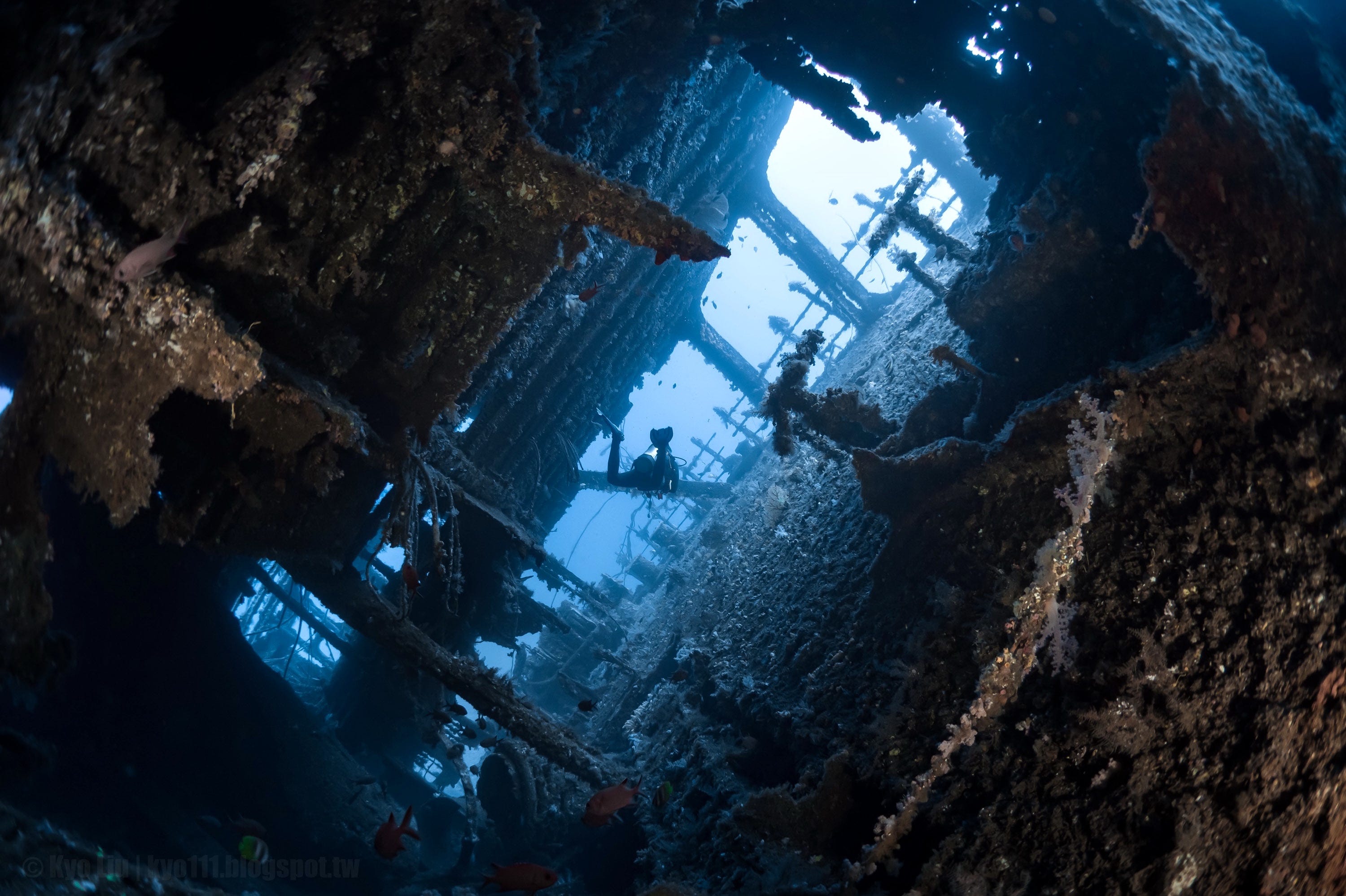
Going Deep Inside
The divers peered down the long dark steel corridor ahead. It seemed to become narrower as it stretched away beyond the limits of their vision. Illuminated in the beam of the powerful light mounted on the back of each diver’s hand was what looked like a smooth soft pile carpet on the floor of the corridor. But they knew this was no benign welcome mat. What looked like a solid surface was, in fact, a thick layer of silt piled up in the bare metal passageway by the twin forces of water and time. It was a potential death trap.
Aware that they were entering a place where delicate forces were in fragile balance, the divers proceeded cautiously, using techniques honed over hundreds of similar dives. Fin movement was restricted to the bare minimum necessary for forward momentum, buoyancy had to be inch perfect and body trim exact.
Nevertheless, their mere presence introduced chaotic elements into the environment. Even the slightest movement generated unusual patterns of activity. Tiny eddies sent puffs of smoky silt into the hitherto clear water. The divers’ bubbles rose, seeking the surface, but were trapped by the ceiling and burst, causing rusty particles to rain down. The occasional brush of a cylinder against a cable caused suspended objects that had previously been motionless to swing gently back and forth. A gloved finger placed gently against a bulkhead for balance would break through the wafer-thin metal.
The divers moved along the corridor, the leader running a thin, strong line down the side of the wall, tying it off occasionally to keep it taut. The line was carefully positioned to be accessible but not to intrude on the narrow space through which they were passing. The second diver’s job was to assist the leader, providing additional light to work by, and checking the line placements, fixing them as necessary. The third diver just observed their surroundings and the line’s location, ready to help if required. The team could only communicate by light signals projected onto the corridor floor or walls, as turning to face each other was impossible without disturbing the silt layer catastrophically.
They swam by doorways, most partly blocked by piles of silt. There were no portholes in this internal passage - no glimmer of light from outside.
Later the divers would report that they had heard no tearing of steel, no crashing of debris. Nothing had been audible beyond the slow, steady, reliable, confidence-building, rhythm of their breathing - a long inhalation, a short pause, then a longer exhalation.
But, as they swam, they were sending stream after stream of exhaled gas up against a steel beam, maintained in precarious balance by a heavily rusted joint. It only needed one final eruption of bubbles to shatter the rust around the joint and the beam was released from its grasp.
It fell through the void and crashed into Diver 3’s cylinders, propelling him downwards through the silt layer onto the metal floor of the corridor. The diver’s instincts took over. He didn’t struggle. He lay still in complete darkness, buried alive in fine sand, with an enormous weight on his back. His chest felt tight and he could hear a roaring, pulsating sound, which was becoming ever faster. Panic began to rise within him but he had the presence of mind to resist it. He forced himself to think logically. He exhaled slowly and fully, then inhaled as deeply as he could. His head began to clear. The noise dissipated. Anxiety began to fade. His thoughts turned to what had happened and what he needed to do now.
***
A few metres ahead, the lead diver paused, sensing something was wrong, perhaps alerted by the absence of flickering light from behind him. He looked down and peered back between his legs towards where his team should be.
They were no longer there. All he saw, moving inexorably down the corridor towards him was a turbulent, roiling wall of silt. He glanced to one side and saw the handle of a closed door. He quickly tied his line to it just as the silt engulfed him. It was as if night had fallen. His powerful dive torch was now useless, its beam just a pinprick.
The leader’s mission had changed abruptly. Any thought of progressing further was gone. The only task now was to ensure the safe extraction of the dive team from the wreck. As the reel diver, he was at the front of the team. There was no one further down the corridor. There was only one way to go, back along the line.
He checked the line tie-off he had just made to ensure it was secure, clipped the reel onto the guideline and left it there. Then he formed a circle around the line with the thumb and forefinger of his left hand. He turned, his right hand extended in front of him to protect his head. In a few seconds, his fingers encountered the previous tie-off he had made. Carefully, he ran his hand over it, never losing contact with the line, and continued. Visibility was still zero. His aim now was to find Diver 2.
***
The silt cloud engulfed Diver 2 before she knew anything had happened. She had no time to swim for the guideline before her world closed in on itself. She reached out for an object, any object, to steady herself and found a pipe attached to the wall. It could equally well have been on the ceiling or the floor. It was impossible to tell. Tugging at the pipe firmly, she tested its strength. It felt secure enough, so she removed a small jump reel from a clip on her harness and tied the end of the line to the pipe.
Holding on to the reel, she moved away from the pipe, let the line run out slowly, and stretched out her free arm searching for the guideline. The reel and line were her lifeline. A wild, untethered, search might only succeed in taking her deeper into the wreck, perhaps through one of the doorways they had passed. But, with her line attached to the pipe, she could always wind the reel back to her starting point, if she felt she had gone the wrong way. Then she could begin a new search for the guideline. She knew it must be close to the pipe. She had hardly moved after the silt cloud hit.
Within 30 seconds or so, Diver 2’s outstretched hand flicked against a taut line. She gripped it gently. This must be it. Now to work out which direction was out. She felt a hand brush her head and was startled. Then relaxed. This could only be Diver 1. She reached up to grip his hand briefly in acknowledgement. Now, neither was alone. Diver 2 circled the guideline with her thumb and forefinger and let her small personal reel fall away. It was now unnecessary. She would recover it on another dive.
With the lead diver holding her upper arm and pushing her in what he knew was the direction of the exit, they moved slowly back along the guideline, hoping to find Diver 3 waiting patiently for them. But, they didn’t encounter him and, as they emerged from the shipwreck, he was nowhere to be seen. They looked back towards the wreck, which was slowly spewing silt from several orifices, and shuddered.
***
Diver 3 was nowhere near the line but he was calm. He had a good idea of what had happened. He also knew that, now that he was in control of his breathing, he had plenty of time to find a solution to his predicament. They had all started the dive with plenty of air. They had calculated how much they thought they would require and had made sure to take double what they needed, just in case.
He cautiously released some air from the rear-mounted air cell on his harness. Immediately, the pressure on his chest eased, so he deflated his cell further. The pressure eased again. It seemed that the beam was not lying on him fully. It must have come to rest on some other object, which was now at least partially supporting its weight. He could move.
He continued to release air from his wing little by little and finally managed to squirm out from underneath the beam. But he was still blind, engulfed in silt and had no idea where he was.
Just as Diver 2 had done, he took out a small reel, tied the line off to an object that felt firmly attached and ran out the reel slowly, searching by feel for the guideline. First, he went around the corridor one way but was unsuccessful. Then he returned to his tie-off and headed off in what he thought - hoped - was the opposite direction. He knew the line was close to one of the corridor walls and he also knew that the other divers would have left it in place, no matter what their situation was. So, it was definitely there. He just had to find it. And, in the meantime, stay calm.
On his second attempt, he found the guideline, guessed the direction of the exit and eventually emerged to find his two colleagues waiting for him.
They made an incident-free ascent and went back down to the wreck the next day to recover the reels and lines. The silt layer was back in place, the water inside the wreck was crystal clear and you would never know anything had happened.
This is an adaptation of the story at the beginning of the chapter on wreck diving in Scuba Confidential. It’s more than just a how-to-dive book.
Shipwreck History
Seeing shipwrecks underwater, exploring them, watching as, over time, the ocean claims them for itself, and learning the history of their life and demise are a key part of our sport. In this issue of Scuba Conversational, I bring together a few features centred around the theme.
The Monitor’s Swedish Connection
A couple of years ago, InDepth published a terrific story by Edd Stockdale, connecting Långban, a mining village in Sweden, which now hosts a museum and a scuba diving association, with the invention of the ironclad USS Monitor, the ship that revolutionised naval design and consigned wooden warships to history.
Ironclad Inventor John Ericsson was born in the old office building, where today’s divers live while they are exploring the mine and learning about the 400-year-plus history of the area.
You can read the whole story in In Depth here. It’s a fascinating tale, connecting cultures and eras.
The USS Monitor has a place in scuba diving history. In the 1980s wreck diver Gary Gentile’s quest to get permission to dive the wreck was instrumental in raising public awareness of deep, planned decompression diving. I tell the whole story in Technical Diving Volume 1: Talks on Technical Diving - Genesis and Exodus.
Technically Speaking Audiobook
Gallipoli Shipwrecks
The WW1 campaign to force a passage through Turkey’s Dardanelles Strait was intended to enable the Allies to bolster Russia – the traditional enemy of the Turks – in its fight against Germany.
The Royal Navy embarked on an ill-conceived action. Its guns outranged the Turkish land batteries at the narrows of the strait, but its mighty fleet of 63 Dreadnought-class battleships, named for their supposed invulnerability and supported by 180 other vessels, proved no match for the actions of a solitary little Turkish minelayer, the Nusrat.
HMS Ocean, HMS Irresistible, HMS Goliath, the French battleship Bouvet and five other cruisers were sunk within hours. The strong currents and geographical bottleneck formed by the Dardanelles also helped in setting up the British fleet for easy attack by German U-boats.
So writes Mahmut Suner in a piece carried by Divernet on the quite astonishing collection of shipwrecks to be found in the waters around Gallipoli, all sunk between April 1915 and January 1916 in a military action that was supposed to be all over in 11 days, but lasted 8 months, and ended after hundreds of thousands of people had been killed and in humiliating defeat on land and at sea for British Admiralty First Lord Winston Churchill.
Mahmut goes on to write.
Several hundred ships sank in the coastal waters between Anzac Bay and Suvla Bay on the western side of the peninsula, and the locations of 216 have been discovered to date.
Yes, not a misprint, 216 shipwrecks!
Here, courtesy of Mahmut and Divernet, are a few images to whet your appetite for a trip to this amazing place. Watch out for some powerful currents, though.
The full article can be found on Divernet here.
This is Mahmut’s Triton Magazine. It showcases some fabulous photography and is chock full of information on some of the other diving options in Turkey - which are almost certainly better than you think.
From Planes to the Pacific
Many years ago, more than either of us cares to remember, I dived some deep Florida shipwrecks with Andrew Driver. Over the years, we have kept in touch sporadically and it was he who came up with this terrific story of two divers from the Seattle area who have been obsessed with wrecks for over 40 years. They began in the 1970s, pulling up lost aircraft from a nearby lake. Now they have graduated to much bigger things and recently found what they think may be the S.S. Pacific, the region’s most deadly shipwreck ever - (and possibly also one of its richest)…
This is their story.
The S.S. Pacific was packed full of passengers in 1875. It was charting the first steamship voyage from Seattle to San Francisco, before Washington had even achieved statehood. But after a collision with a sailing vessel called The Orpheus, the Pacific and its cargo were lost.
Now, after decades of searching, two local researchers - Jeff Hummel and Matt McCauley - think they've found it. The story behind the Pacific captured their imaginations back in the 1980s. There are stories that the wreck was carrying millions of dollars worth of gold.
The two men met at high school on Mercer Island in 1979. Rumor had it that Hummel knew about a sunken plane that his late father had seen crash from his job at the Renton Boeing plant. McCauley had just received scuba certification, and together, they devised a plan to pull the plane up from the seafloor…
Here they are with the first plane they recovered.
And here’s an image of what all the evidence suggests is where what is left of the S.S. Pacific and her cargo lies now.
The full story, together with a fascinating interview with the two guys is here on KUOW FM, a public radio station in Seattle.
The story also made international news and the Guardian carried a superb photo of the S.S. Pacific, as well as a good description of how she sank.
The SS Pacific was a 225ft-paddle-wheel steamer that traversed the coast of western North America. It partially sank in 1861 and was briefly restored for service until its owners left it to rot in 1870. But a gold rush made the route from Victoria, British Columbia, to San Francisco highly lucrative, and the ship was brought back into service, despite rumours of a weakened hull.
On 4 November 1875, the Pacific departed Victoria with more passengers than its lifeboats could support. On board were wealthy residents of the city, gold miners and Chinese labourers.
Stored safely among the cargo of dry goods, coal, horses and opium was at least 4,000 ounces of gold – worth nearly more than $7m at current prices.
That evening, the ship encountered rough seas and to help steer through the strong winds and whitecaps, the captain ordered two port-side lifeboats filled with water.
Later that night, the Orpheus, a ship travelling from San Francisco to Vancouver Island to collect coal, spotted a light from the Pacific near Washington state’s Cape Flattery and turned sharply to avoid it.
The crew of the Pacific tried to avoid a collision by reversing the engines, but the Orpheus struck the side of the oncoming ship.
Most of the lifeboats capsized before hitting the water and the ship quickly broke apart. Less than half an hour after it had first been struck, the Pacific sank, taking with it nearly all of the passengers.
Only two men survived the sinking and their story is carried here on the excellent website of the Northwest Shipwreck Alliance.
It’s a harrowing tale.
According to one of the survivors, Neil Henly:
I woke up with the crash. Jumped out of my bunk, the water rushing through the bow; saw all hands rush on the hurricane deck… the ship fell into the trough of the sea and became unmanageable, the fires being extinguished; all was confusion, the passengers crowding into the boats which the officers and crew were trying to clear away.
The other survivor, Henry Jelly, together with another man, succeeded in hanging on to the ship’s pilot house - which must have broken off - as it drifted by.
We held on to a copper wire that came out of the top. Next morning we saw some life preservers floating near the house, and with their ropes lashed myself and my comrade onto the house. I and my comrade were on the top of the pilot house all of the 5th until about 4:00 PM, when he died and I cut him loose. The sea was running very high all day, and I think my comrade was drowned by the waves washing over him, he not being strong enough to hold his head up and the waves constantly washing over us.
For me, the stories behind shipwrecks are key. When you dive a wreck, it means more if you know its history, who the passengers were, and how and why it sank.
Here’s a final shipwreck tale. This one also comes from Divernet.
Ming Dynasty Ceramics One Mile Below
As Steve Weinman reports:
More than 100,000 Chinese artefacts, mainly Ming ceramics, from two ships wrecked 500 years ago have been discovered at a depth of 1.5km in the South China Sea – marking the first time China has found deep wrecks on such a scale.
No 1 wreck is reckoned to lie scattered over a 10,000sq m area. Though the cargo is visible most of the ship is thought to remain buried in sand, awaiting excavation. Analysis of recovered samples indicates that the cargo was being exported and dates to the time of the 11th ruler of the Ming Dynasty, Emperor Zhengde (1506-21).
Blue-and-white porcelain, pieces of celadon pottery, green glazed and other styles of ceramics found at the site originated at two manufacturing centres, in Jingdezhen and Longquan.
Shipwreck No 2 has been dated to the reign of Zhengde’s father Emperor Hongzhi (1488-1505). The number of ceramics on board is far smaller but large numbers of preserved timber logs were found lying at the site.
You can find the full story here.
Obviously, at depths like these, they are using submersibles, not divers, but how incredible it is to see artefacts like these, preserved in the darkness of the deep ocean for hundreds of years.
Last but not Least
I probably chose shipwrecks as the theme for this issue because of our imminent return to Truk Lagoon, something that has been on our minds for the last few days. It has been a while since I was last there.
Our Truk visit is part of a larger trip next month. We will be spending time in Hawaii with buddies on Big Island and then going to Honolulu for the Festival of the Pacific Arts and Culture (FestPac 2024), where the indigenous people of Taiwan will join people from many other islands in the Pacific Ocean to celebrate their shared history. This is an event that takes place every four years. I’m especially looking forward to seeing the boat parade.
Want to know what FestPac is all about? Click below.
We will then take the Island Hopper and bounce through Majuro and Kwajalein in the Marshall Islands en route to Pohnpei in the Federated States of Micronesia, meeting up with friends there to dive and sightsee, then go to Chuuk (Truk) for a week or so to dive with the folk at Blue Lagoon Resort. This was Truk’s original dive centre. It was founded by the late Kimiou Aisek, who remembered watching as a child as the US aircraft bombed the Japanese ships and sent them to the seabed. Then, decades later, he went out to locate and mark them, so future generations of tourist scuba divers, descendants of those who perished on the wrecks, war historians, scientists and others could visit them. Today, the resort is managed by Kimiou’s grandson.
Here is Tim’s video of Truk again, to give you a glimpse of what this astonishing place - famous for divers, totally unknown to non-divers - is like.
And then we’ll be heading for Guam, where I had a dive shop for a few years. It’s been more than twenty years since I left and my old shop is now a bright orange laundromat. I am looking forward to seeing the island again and meeting up with old friends (as well as boring Sofie with “back in the day” stories!)
Right, that’s it from me for this issue. Chat with you again next month, when I will be writing Scuba Conversational #62 from a different West Pacific island than usual.



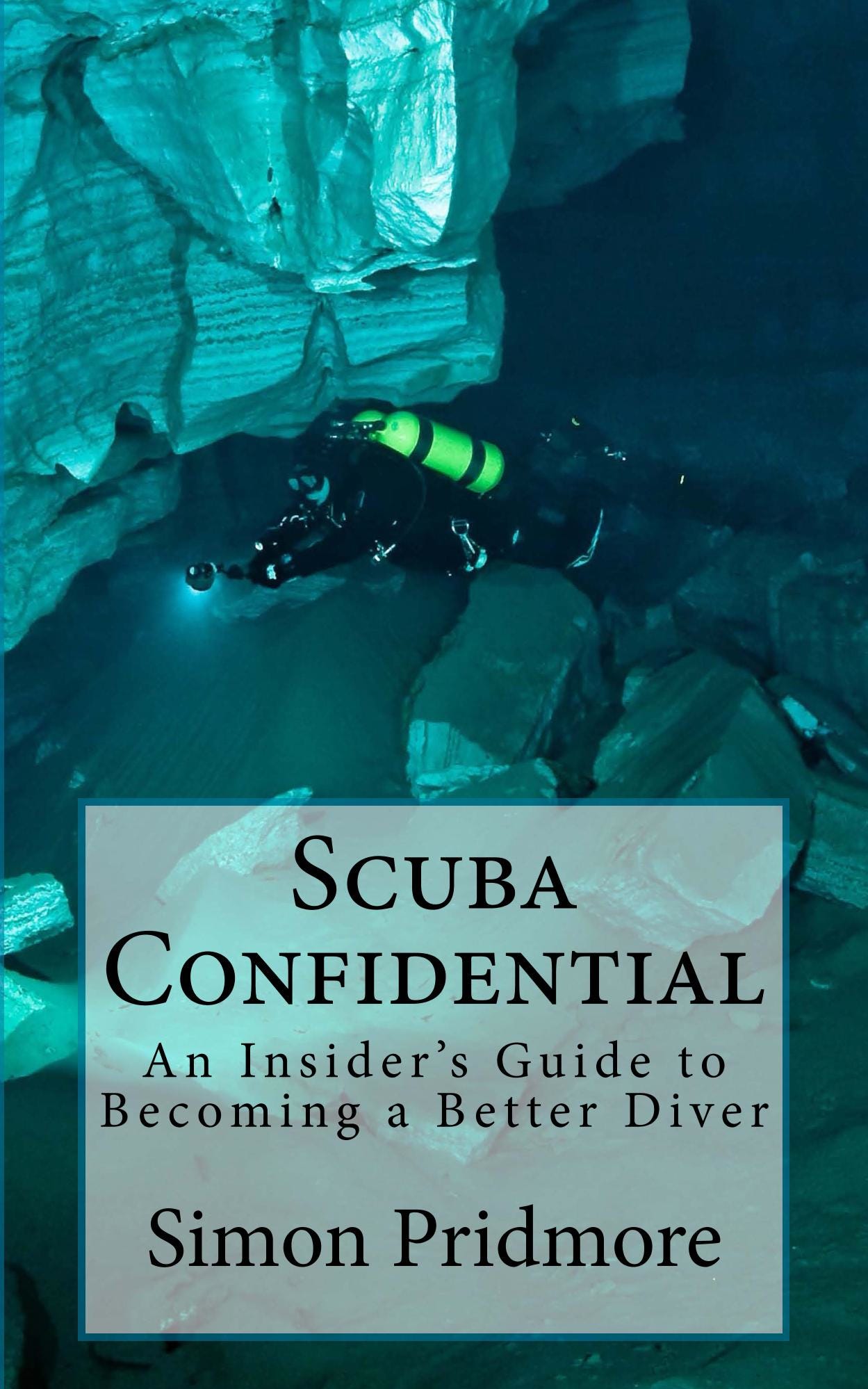





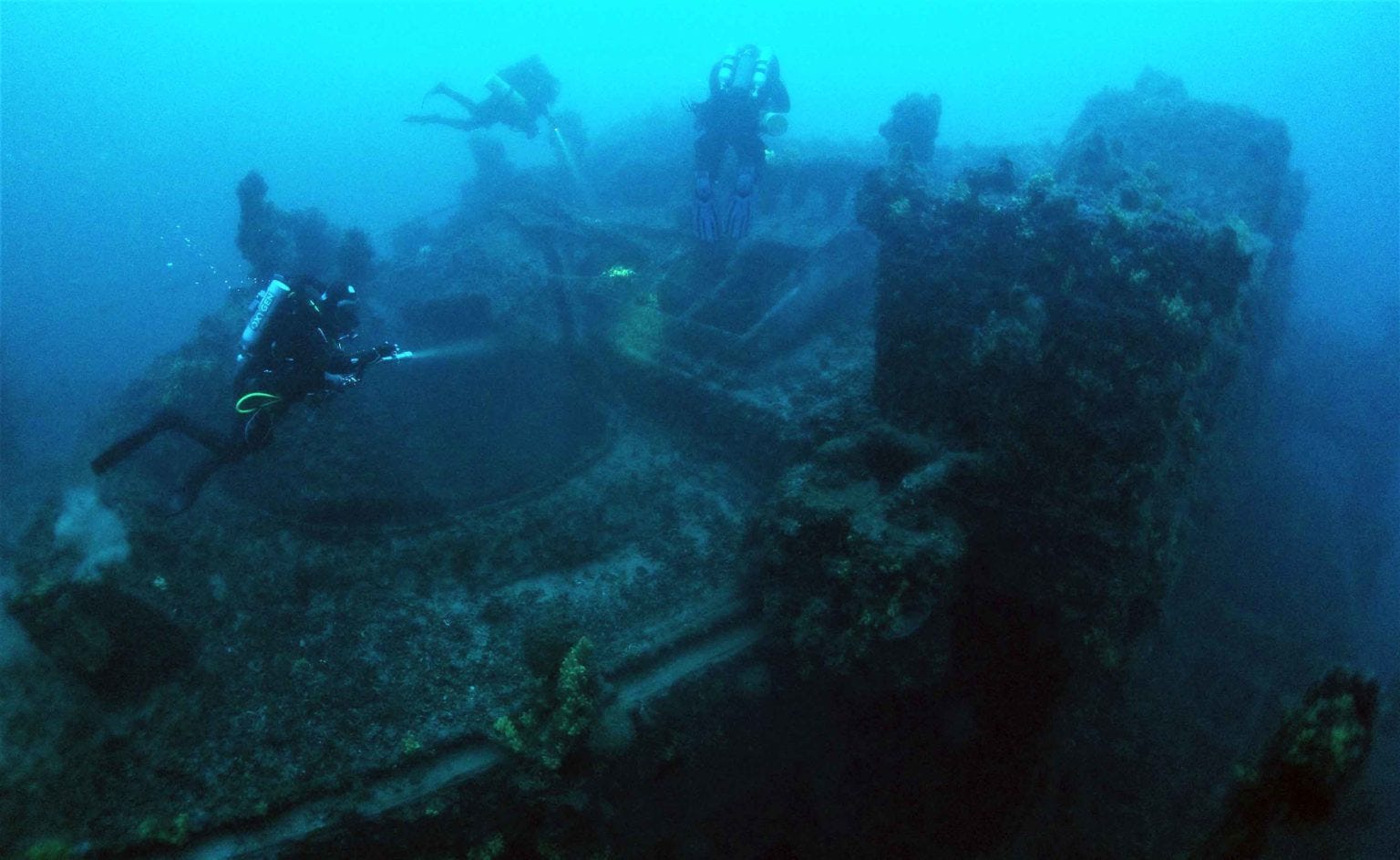
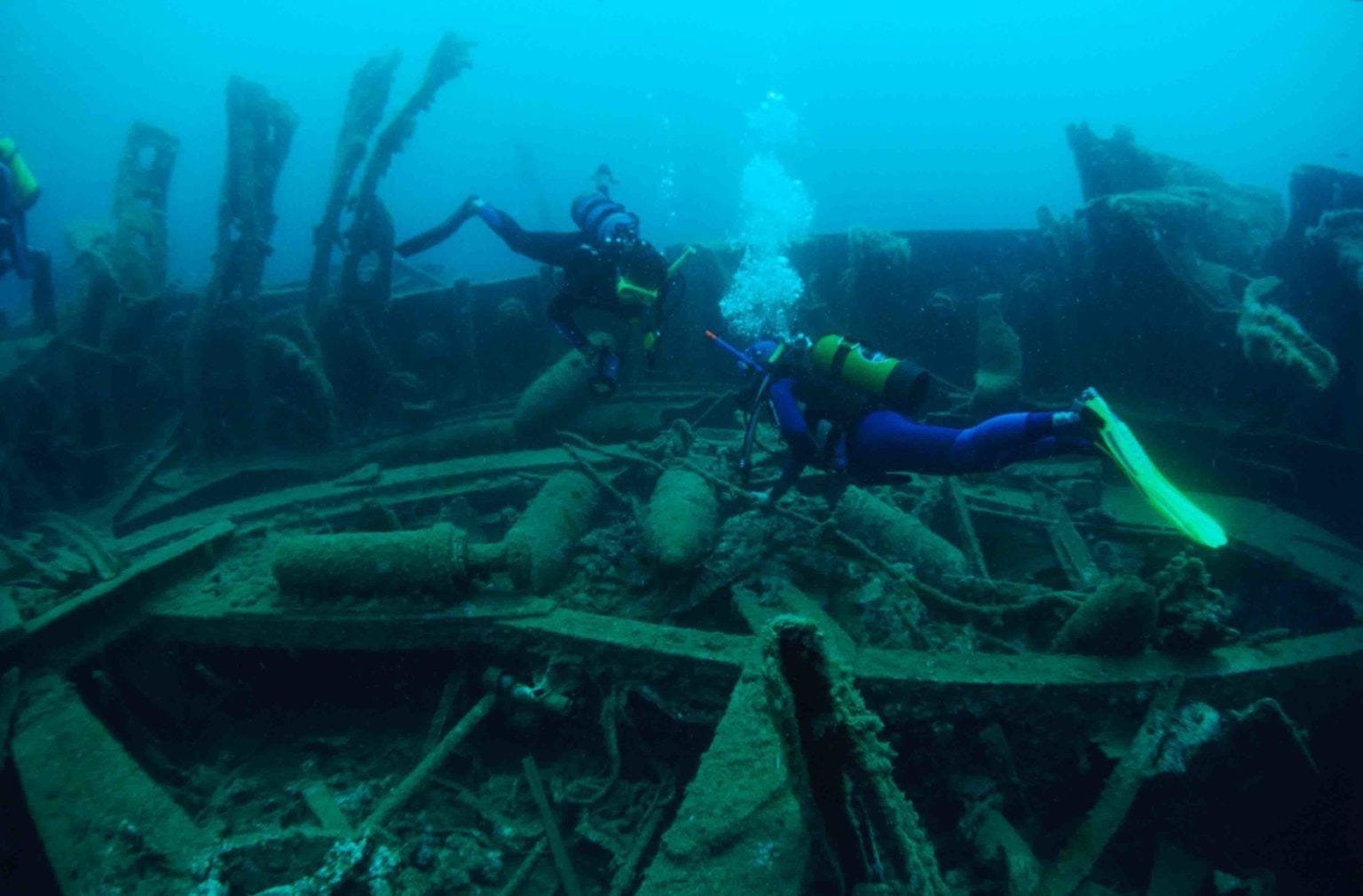
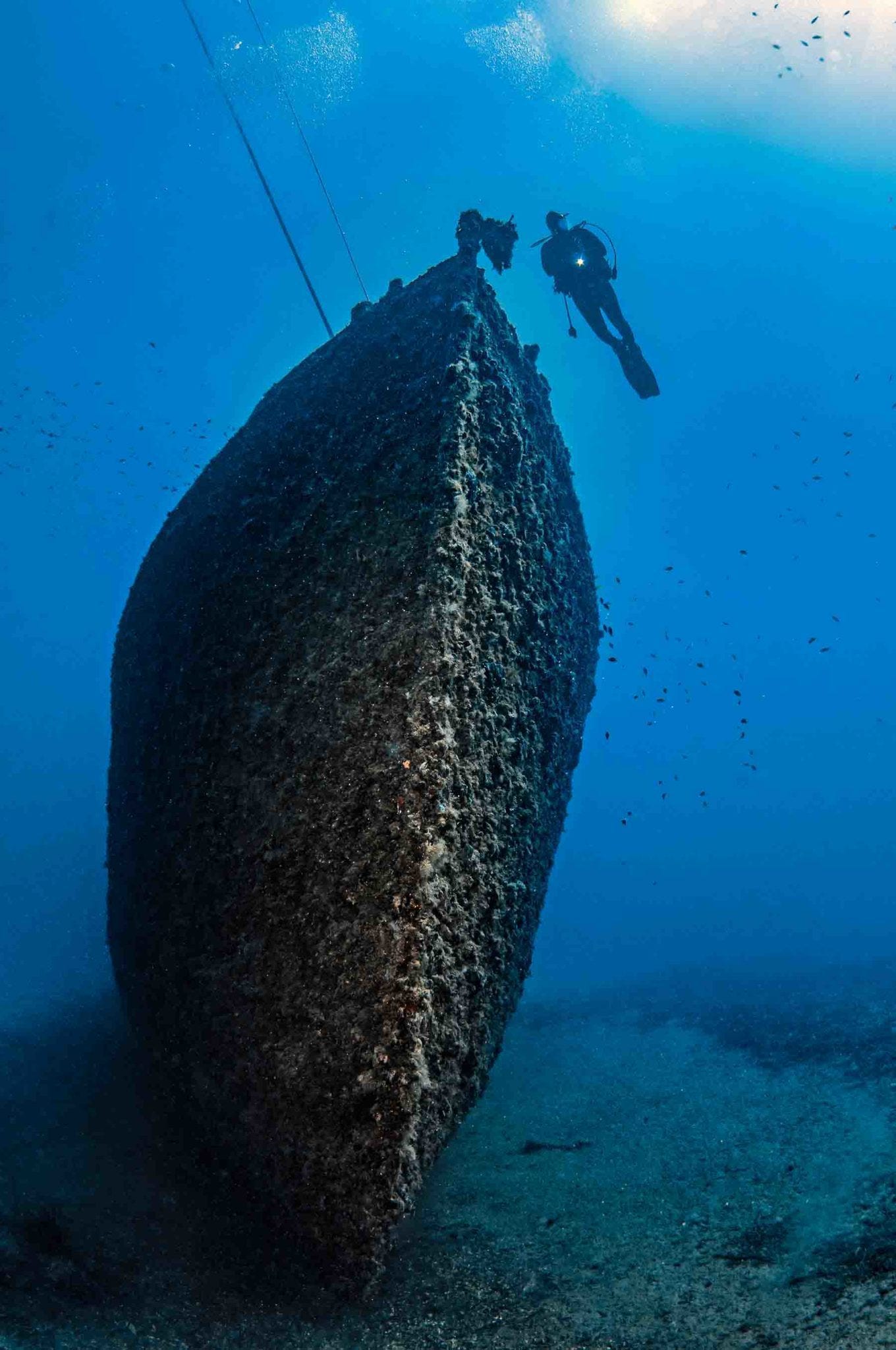
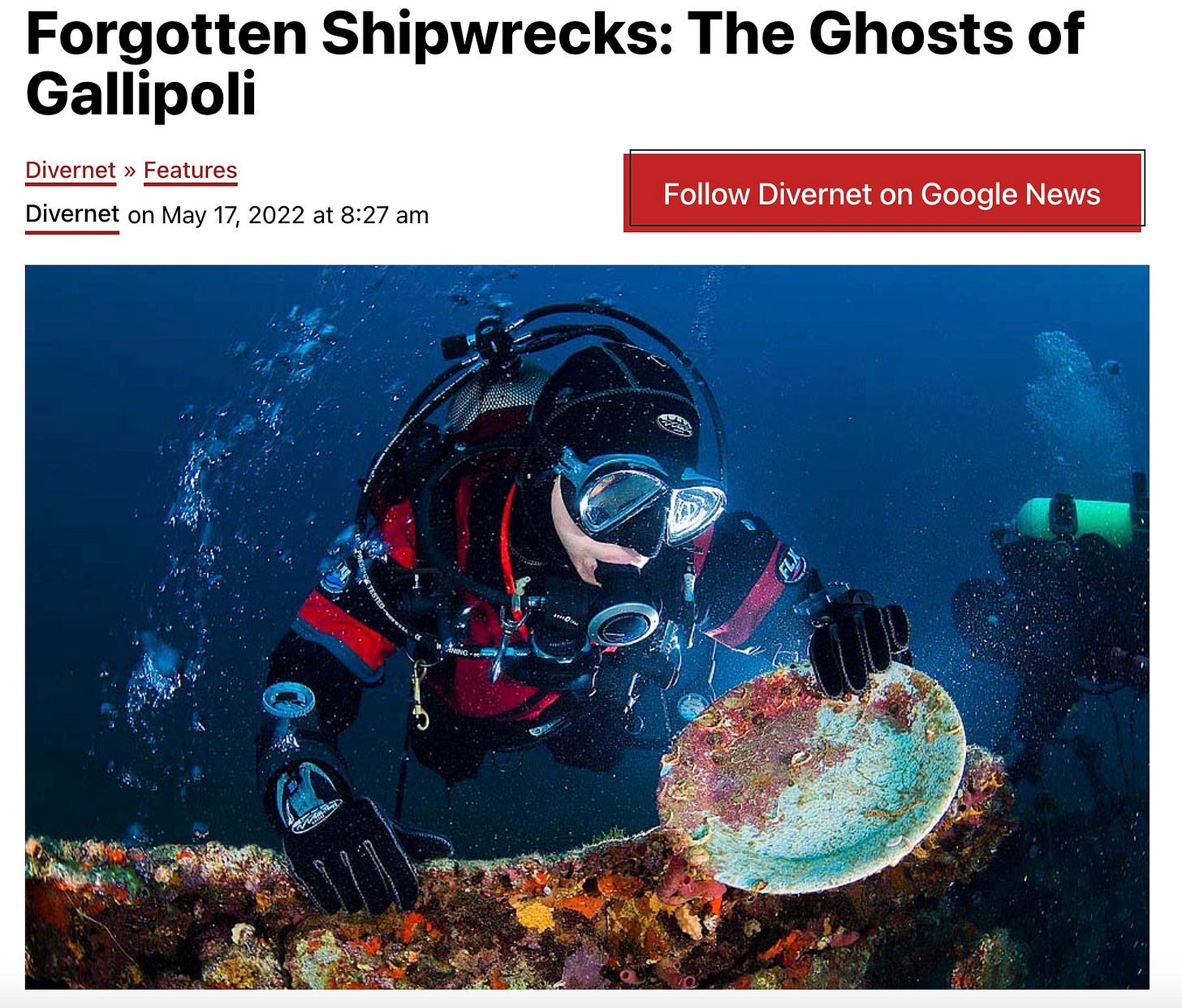








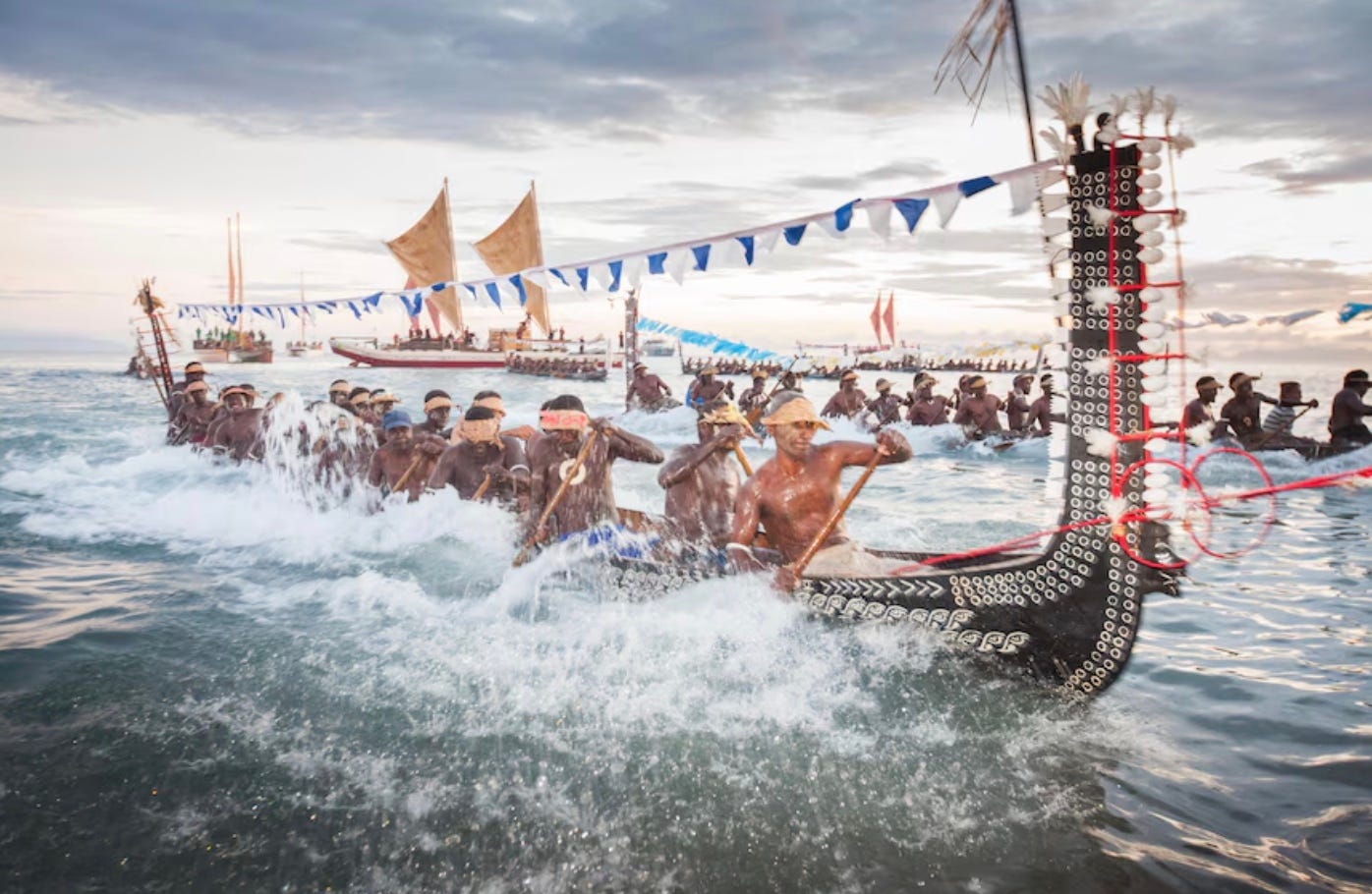


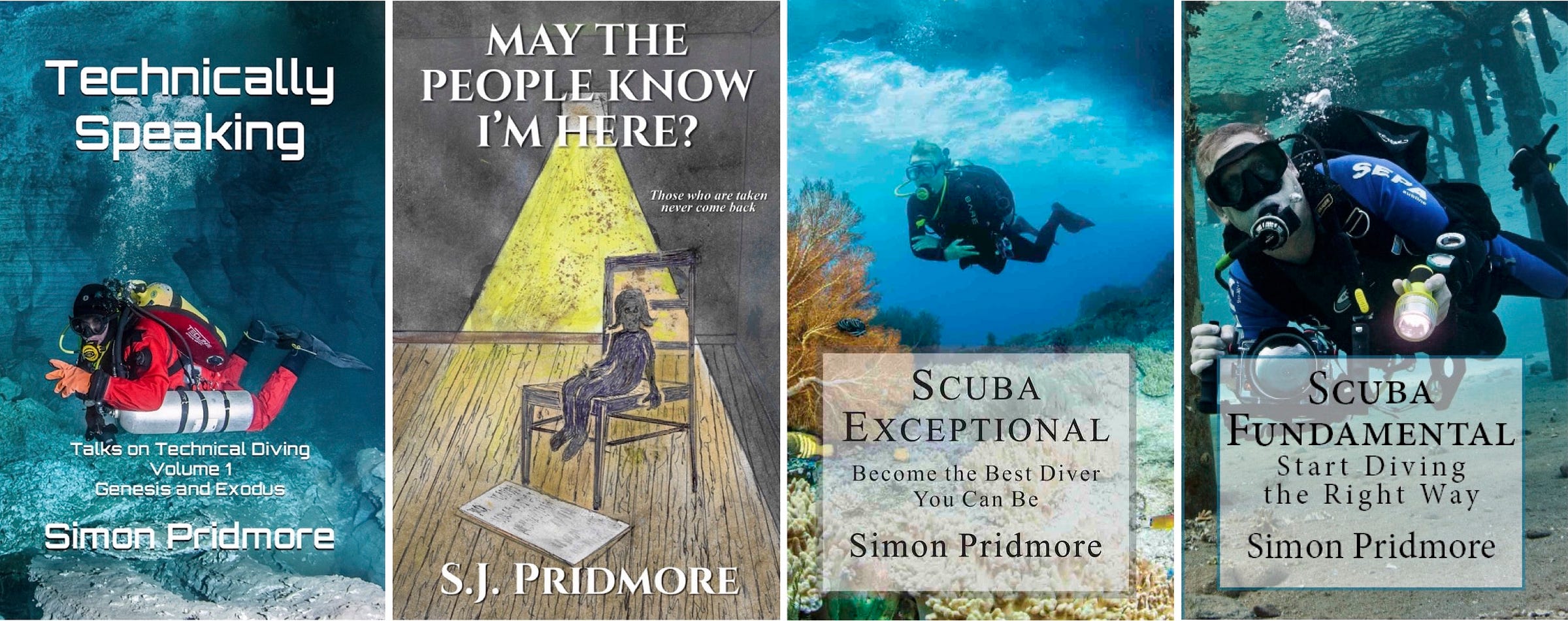
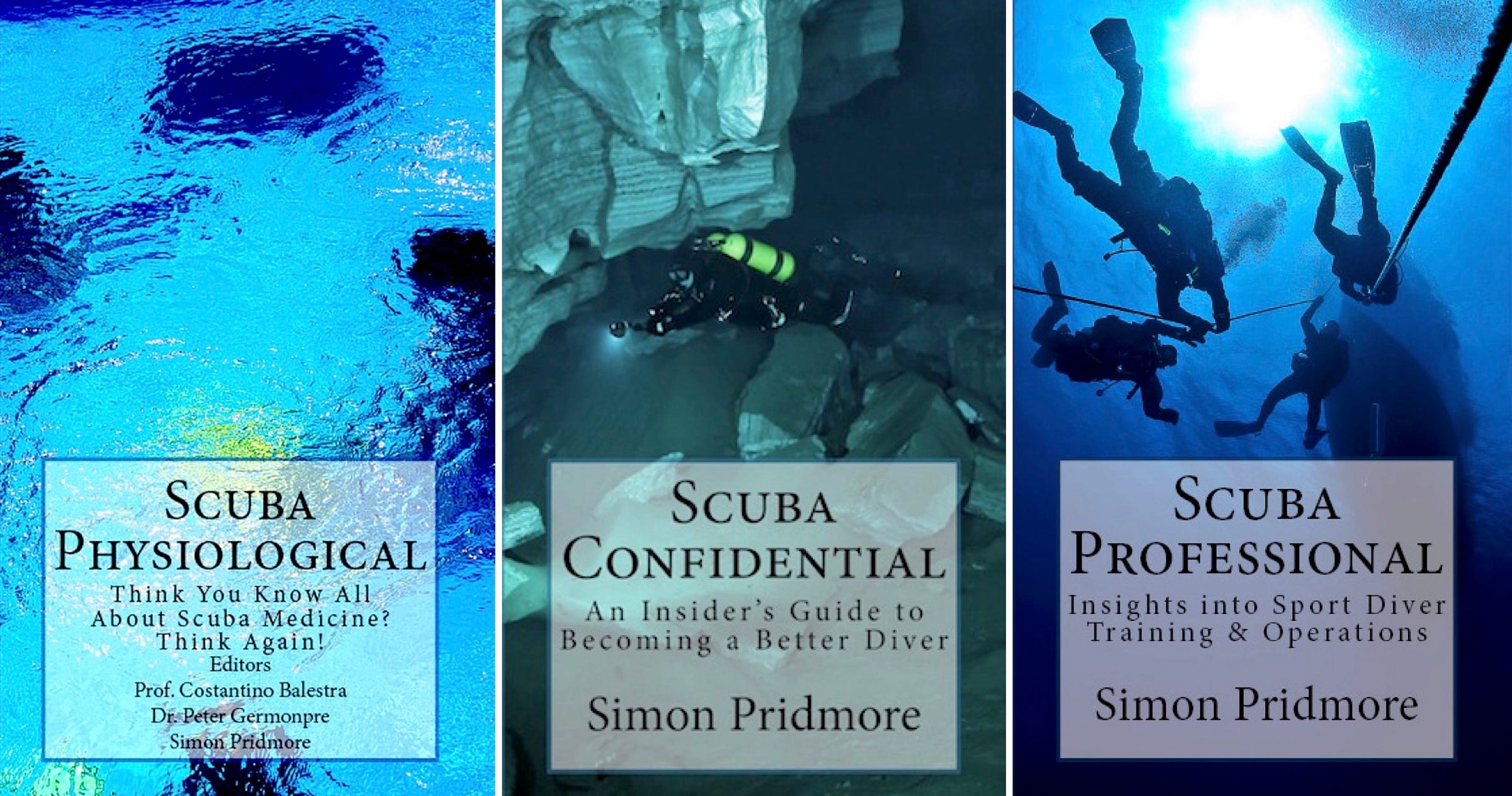
Whoa! As descriptive as a movie script and twice as thrilling, knowing that it actually happened. Kudos to the divers, and to those who trained them, and those who made them better divers over the years. My pulse is still elevated. Thanks for sharing, Simon!
Wow. Loved this excerpt. Really captures the excitement and danger that comes with wreck diving.